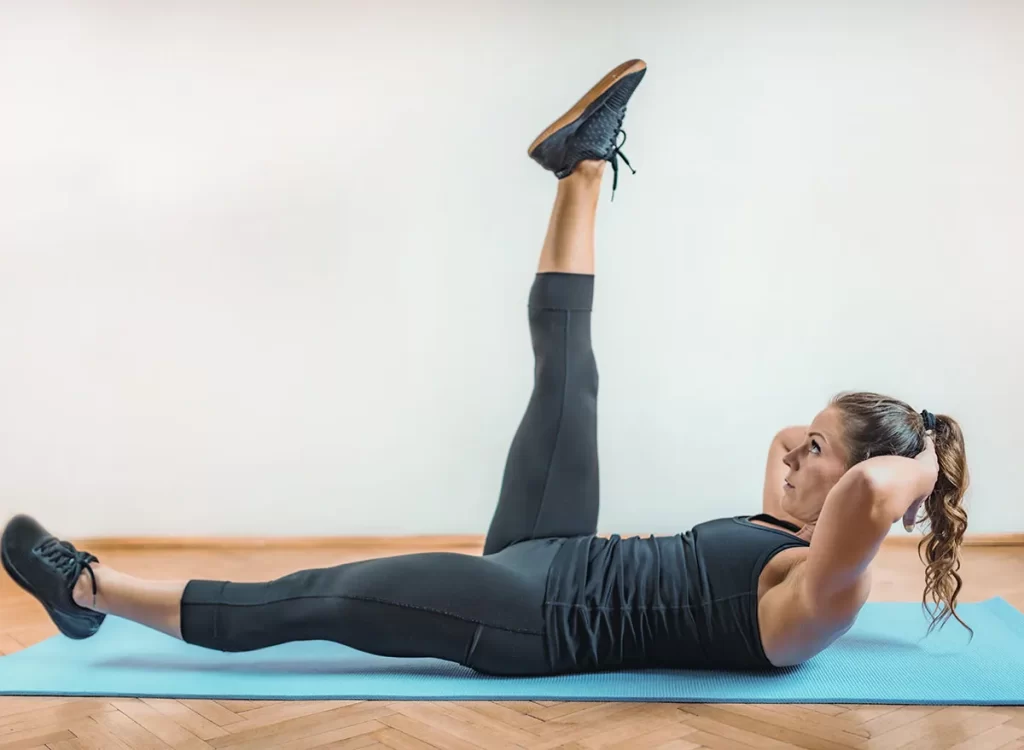Liposuction recovery exercises play a crucial role in the healing process following a plastic surgery procedure, such as tummy tuck or body sculpting procedure, and are essential in surgery routines. After undergoing liposuction and a tummy tuck, your body needs time to adjust, pal, and heal with power. Engaging in the right lipo workouts and liposuction activities can speed up recovery and enhance results, especially for stomach lipo and smartlipo laser liposuction. Gentle movements help reduce swelling and improve circulation. These exercises also prevent stiffness and promote flexibility.
Historically, patients often faced long recovery periods with limited guidance on post-op care following traditional liposuction, including abdominal liposuction and smartlipo laser liposuction, affecting their overall liposuction results. Today, medical advancements emphasize the importance of active recovery. Incorporating specific exercises not only aids in physical healing but also boosts mental well-being. Understanding how to navigate this phase is essential for achieving your desired outcomes, especially with liposuction results and smartlipo laser liposuction. With the right approach, you can ensure a smoother recovery journey and enjoy the benefits of your liposuction results more quickly.
Understanding Liposuction
Definition
Liposuction is a cosmetic procedure designed to remove excess fat from specific areas of the body. It reshapes and contours the body by targeting stubborn fat deposits with suction. This treatment helps many individuals achieve their desired appearance.
Common Areas Treated
The most common areas for liposuction include the abdomen, thighs, and arms.
-
Abdominal liposuction targets stubborn belly fat. Many people struggle with weight loss in this area.
-
Thigh liposuction addresses unwanted fat on the inner and outer thighs. This can create a more balanced silhouette.
-
The arm liposuction procedure focuses on eliminating excess fat under the arms, often referred to as “bat wings.”
Each of these areas can benefit significantly from liposuction procedures.
Realistic Expectations
Prospective liposuction patients must understand the importance of realistic expectations. Liposuction is not a weight-loss solution. It is a body-contouring method. Patients should aim for realistic goals based on their body type, lifestyle, and suction.
Consultation with a board-certified plastic surgeon is crucial. A qualified surgeon will assess individual needs, discuss potential results, and utilize suction. They will explain the different liposuction techniques available, such as traditional liposuction and advanced laser liposuction techniques like smartlipo.
Surgeons can also provide information about suction, recovery time, and necessary post-operative care. Understanding these factors, including suction, helps patients prepare mentally and physically for the procedure.
Importance of Consultation
Consulting with experienced liposuction providers ensures safety and satisfaction. Surgeons evaluate medical history and perform physical examinations. They help patients understand what to expect during suction and after the surgery.
Patients should ask questions during their consultations. Clarifying doubts about the liposuction procedure can alleviate anxiety. Knowledge about the process leads to informed decisions.
Surgeons emphasize that results vary among individuals. Factors like skin elasticity and overall health affect outcomes. Therefore, discussing concerns openly, including suction, can improve communication between patient and surgeon.
Summary of Techniques
Several techniques are available for liposuction treatment:
-
Traditional liposuction
-
Micro liposuction
-
Smartlipo laser liposuction
Each method has unique benefits depending on patient needs.
Patients should choose a suction technique that aligns with their goals. Discussing options with a surgeon helps ensure optimal results.
Immediate Post-Op Phase
Rest Importance
Rest is crucial after liposuction. The body needs time to heal from the surgical procedure involving suction. Strenuous activities can disrupt the healing process. Patients should avoid heavy lifting and suction exercise for at least two weeks post-op. This period allows the body to recover without complications.
Surgeons often recommend light walking to promote circulation. Walking helps prevent blood clots but should be done gently. Listen to your body during this time. If discomfort occurs, stop and rest.
Compression Garments
Compression garments play a key role in recovery. Wearing these garments helps reduce swelling, supports the healing tissues, and provides suction. They apply gentle suction pressure to the treated areas, improving blood flow. Surgeons typically recommend wearing them for several weeks after surgery, suction included.
These garments also help maintain the shape of the body as it heals through suction. Patients should follow the surgeon’s guidelines on when and how long to wear them for suction. Proper use of compression wear and suction can lead to better surgical results.
Follow Surgeon’s Instructions
Following the surgeon’s post-op care instructions is essential. Each patient’s recovery plan may differ based on individual needs, the extent of the procedure, and suction. Surgeons provide specific guidelines tailored to each patient. These may include medication schedules, wound care, suction, and activity restrictions.
Ignoring these instructions can lead to complications such as infection or poor healing. Patients should attend all follow-up appointments to monitor their progress. If any concerns arise, a quick call to the surgeon is advisable.
Pain Management
Managing pain effectively is part of recovery. Surgeons typically prescribe pain relief medications after surgery. Following the prescribed dosage is important for comfort during recovery.
Patients should not hesitate to communicate with their medical team about pain levels. Adjustments may be necessary based on individual responses to medication.
Hydration and Nutrition
Staying hydrated is vital during recovery. Drinking plenty of water aids in healing and reduces swelling. A balanced diet rich in nutrients supports recovery as well.
Eating fruits, vegetables, lean proteins, and whole grains can enhance healing processes. Avoiding salty foods can help minimize swelling.
Early Recovery Phase
Gentle Walking
Patients can start gentle walking just a couple of days after liposuction surgery. This activity plays an essential role in the recovery process. Walking helps increase blood circulation. Improved circulation can reduce swelling and promote healing.
Walking also encourages the body to flush out excess fluids. Many patients experience water retention after surgery. Gentle movement helps minimize this issue. It aids in returning the body to its normal state.
Listening to Your Body
Listening to your body is crucial during recovery. Patients should pay attention to how they feel while moving. If discomfort arises, it’s important to stop and rest. Overexerting can lead to complications or delay the healing process.
Gradually increasing activity levels is key. Start with short walks around the house. As you feel more comfortable, extend your walks outside. Always keep in mind that every patient’s recovery journey varies.
Importance of Hydration
Staying hydrated is vital during recovery. Drinking plenty of water helps maintain skin elasticity and overall appearance. Proper hydration supports the body’s natural healing processes as well.
Water also aids in flushing out toxins from the body. It can help reduce swelling and improve energy levels. Patients should aim for at least eight glasses of water daily, especially after surgery.
Managing Swelling
Swelling is a common part of the recovery process after liposuction. Patients may notice changes in their appearance due to this swelling. While it can be concerning, most swelling will subside over time.
Gentle walking can significantly help in managing this swelling. As mentioned earlier, increased blood flow reduces fluid buildup. Wearing compression garments as advised by your doctor aids in minimizing swelling too.
Monitoring Results
Results from liposuction become clearer as recovery progresses. Initial results might be obscured by swelling and bruising. Patience is essential during this phase.
Patients should take photos weekly to track their progress. This can provide motivation as they see improvements over time. Remember that full results may take several months to fully reveal.
Mid Recovery Phase
Walking Routine
Gradually increasing walking distance is crucial during the mid-recovery phase. Start with short walks around the house. Aim for about 10 to 15 minutes each day. As comfort improves, extend this duration. Walking helps boost circulation and speeds up healing.
After a week or two, increase your walking distance. Try to reach 30 minutes daily. This routine supports overall health and aids in recovery. Always listen to your body. If you feel pain, reduce the distance or take a break.
Stretching Exercises
Light stretching exercises can improve mobility during recovery. Begin with gentle neck and shoulder stretches. These movements help relieve tension. They also keep your muscles flexible.
Focus on lower body stretches as well. Simple leg stretches can enhance flexibility in the hips and thighs. Hold each stretch for about 15 to 30 seconds. Repeat them two to three times per session. This will help maintain form and prevent stiffness.
Monitoring Complications
Monitoring for any signs of complications is essential at this stage. Look for unusual swelling, redness, or increased pain around the incision sites. These could indicate potential issues that require attention.
If you notice any concerning symptoms, contact your surgeon immediately. Early intervention can prevent further complications. Staying proactive about your recovery ensures better outcomes.
Weight Management
Maintaining a healthy weight is important after liposuction. Focus on balanced nutrition and portion control during recovery. Eating nutritious foods supports healing and helps manage weight.
Avoid heavy lifting or strenuous activities for several weeks post-surgery. These actions can strain your body and disrupt healing. Instead, stick to light chores around the house as you recover.

Support System
Having a support system can make recovery easier. A pal or family member can assist with daily tasks and provide motivation for exercises. Engaging in activities together can make walking or stretching more enjoyable.
Set goals together, like walking a certain distance by the end of the week. This approach fosters accountability and encourages consistent efforts toward recovery.
Late Recovery Phase
Cardio Exercises
Surgeons often clear patients to resume cardio exercises around four to six weeks post-surgery. Running, cycling, and swimming are excellent options. These activities boost heart health and help burn calories. They also aid in the healing process by improving circulation. Starting slowly is important. Listen to your body and avoid pushing too hard too soon.
Gradually increase intensity as comfort grows. For instance, begin with brisk walking before transitioning to jogging. This approach minimizes the risk of injury. Consistent cardio helps maintain weight loss achieved through liposuction.
Weightlifting
Light weightlifting can typically start about six weeks after surgery. Begin with small weights and focus on form. Exercises like bicep curls or leg lifts can be beneficial. These movements strengthen muscles without straining the body.
Progression is key in this phase. Increase weights gradually as strength improves. Avoid heavy lifting or high-impact workouts initially. This strategy prevents undue stress on healing areas. Always consult a surgeon before starting any weightlifting routine.
Regular Routine
Maintaining a regular exercise routine is crucial for sustaining results after liposuction. A consistent schedule helps prevent weight regain and keeps the body toned. Aim for at least 150 minutes of moderate aerobic activity each week.
Incorporating both cardio and strength training provides balanced fitness. This combination enhances metabolism and muscle tone. Regular exercise boosts mood and energy levels, which can be beneficial during recovery.
Setting realistic goals aids motivation. Track progress to stay engaged in your routine. Celebrate small achievements to foster a positive mindset.
Emotional Well-being
Recovery from liposuction involves emotional aspects too. Physical changes can impact self-esteem and body image. Engaging in exercise can improve mental health by releasing endorphins.
Support systems play a significant role during this time. Friends, family, or support groups can provide encouragement. Sharing experiences with others who have undergone similar procedures can be helpful.
Long-term Commitment
Long-term commitment to a healthy lifestyle is essential for lasting results. Balanced nutrition complements exercise efforts after liposuction. Focus on whole foods, lean proteins, fruits, and vegetables.
Staying hydrated also supports recovery and overall health. Drinking plenty of water aids digestion and keeps skin healthy.
Safe Post-Lipo Exercises
Light Activities
Walking is one of the best lipo exercises after surgery. It helps improve circulation and reduces swelling. Start with short walks around your home. Gradually increase the distance as you feel more comfortable.
Swimming is also a safe option. It provides a full-body workout without putting pressure on your body. The water supports your weight, making it easier to move. Aim for gentle strokes and avoid diving or jumping.
Low-impact aerobics can be beneficial too. These workouts keep your heart rate up without straining your body. Simple routines focusing on arm movements and leg lifts work well during recovery.
Avoiding Intensity
High-intensity workouts are not recommended until you are fully healed. Activities like running or heavy lifting can strain your body. They may also lead to complications in the healing process.
Listen to your body’s signals. If you experience pain or discomfort, stop the activity immediately. Consult your doctor if any issues arise. Following a liposuction recovery guide will help ensure you stay on track.
Proper Form
Proper form and technique are crucial during recovery. Poor form can lead to injuries, which can set back your progress. Focus on slow, controlled movements to maintain stability.
Consider working with a trainer who understands post-surgery needs. They can help you learn correct techniques for each exercise. This guidance can prevent injuries and promote effective workouts.
Toning Exercises
Toning exercises are great for rebuilding strength after liposuction. Start with light resistance bands or bodyweight exercises. Focus on areas that may have been treated during the procedure.
Exercises like squats, lunges, and gentle core workouts can help tone muscles. Keep repetitions low at first to avoid overexertion. As you recover, gradually increase intensity based on comfort levels.
Lipo Exercise Timeline
The lipo exercise timeline varies by individual recovery rates. Most patients can start light activities within a few days post-surgery. Full recovery typically takes several weeks, depending on the extent of the procedure.
Check in with your healthcare provider about when to resume more intense workouts. Follow their advice closely to ensure a smooth transition back into regular exercise routines.
Managing Pain During Exercise
Pain Relief Methods
Pain management is crucial during recovery from liposuction. Ice packs can help reduce swelling and numb the area. Applying them for 15-20 minutes can offer relief. Over-the-counter medications, like ibuprofen or acetaminophen, can also assist in managing discomfort. Always follow the recommended dosage on the label.
Start Low-Intensity
Starting with low-intensity exercises is essential. Activities like walking are great for easing into a routine. They increase blood flow without putting too much strain on the body. Gradually increase the duration as comfort allows. Avoid high-impact workouts initially. This approach helps manage pain while promoting healing.
Communication with Surgeon
Communicating with your surgeon is vital if pain persists during exercise. They can provide tailored advice based on your recovery progress. Understanding what is normal and what isn’t can ease anxiety. Regular check-ins ensure that any issues are addressed promptly.
Aerobic Activities
Incorporating aerobic activities into your routine can be beneficial. Gentle cardio, such as cycling or swimming, helps improve stamina without excessive strain. These activities boost circulation, aiding in recovery while keeping discomfort manageable.
Weight Lifting Guidelines
Weight lifting should be approached cautiously after liposuction. Begin with light weights to avoid injury. Focus on form rather than lifting heavy loads initially. Gradually increase weight as strength improves and pain decreases. Ensure that you listen to your body throughout this process.
Diet and Recovery
Diet plays a significant role in recovery from liposuction. Maintaining a balanced diet supports healing and energy levels during workouts. Include lean proteins, fruits, and vegetables in meals. Staying hydrated is equally important, as it aids in reducing inflammation.
Consistency is Key
Consistency in exercising helps build strength over time. Stick to a regular schedule of low-impact workouts to see improvements. Adjust routines based on how your body feels each day. Keeping a positive mindset can make the recovery process smoother.
Monitor Your Body
Monitoring your body’s response to exercise is crucial. Pay attention to signs of excessive pain or discomfort. If symptoms worsen, take a break and consult your healthcare provider.
Common Post-Lipo Exercise Concerns
Swelling Issues
Swelling is a common concern after liposuction. It can occur in areas like the thighs where fat was removed. During exercise, this swelling may increase temporarily. Many patients worry that this will hinder their recovery. However, mild swelling is normal and expected.
Light exercises can help reduce swelling over time. Walking is often recommended as a starting point. It promotes circulation and helps the body heal. Patients should listen to their bodies and avoid pushing too hard.
Bruising Effects
Bruising also tends to happen after liposuction. Bruises can appear around the surgical site, including the thighs. They may look alarming but are part of the healing process. As you start exercising, bruising might seem more noticeable.
Gentle movements can aid in reducing bruising. Stretching and light activities help improve blood flow. This can speed up the healing of bruises. The key is to keep exercises low-impact initially.
Numbness Awareness
Temporary numbness in treated areas is another common issue post-liposuction. Many patients experience this sensation in their thighs or abdomen. It can feel strange but usually resolves within weeks.
Numbness occurs due to nerve irritation during surgery. As healing progresses, feeling returns gradually. Engaging in gentle exercises can stimulate nerves and promote recovery. Patients should not be alarmed by this sensation; it’s part of the healing journey.
Gradual Progression
A gradual increase in exercise intensity is crucial after liposuction. Patients often feel eager to return to their regular routines quickly. However, rushing back into intense workouts can lead to complications.
Starting with simple activities like walking or stretching is best. Over time, patients can introduce more challenging exercises. Listening to your body’s signals is vital during this phase.
Many healthcare providers recommend a structured plan for recovery exercises. This plan typically includes:
-
Week 1-2: Light walking and basic stretches.
-
Week 3-4: Introduction of low-impact aerobic activities.
-
Week 5 onward: Gradual return to strength training.
Following these guidelines ensures safety and effectiveness during recovery.
Closing Thoughts
Liposuction recovery is a journey. You’ve learned about the different phases and how to manage pain while staying active. Incorporating safe exercises at each stage helps speed up healing and boosts your confidence. Addressing common concerns ensures you stay informed and prepared.
Now, it’s time to take action. Listen to your body and consult your healthcare provider before starting any exercise routine. This way, you’ll maximize your results and enjoy a smoother recovery. Embrace this opportunity for a healthier you!
Frequently Asked Questions
What is the best time to start exercises after liposuction?
You can typically begin light walking within a few days post-surgery. More structured exercises should wait until your surgeon gives the green light, usually around 2-4 weeks.
Are there specific exercises I should avoid after liposuction?
Yes, avoid high-impact activities, heavy lifting, and any movements that strain the treated areas for at least six weeks. Always follow your surgeon’s recommendations.
How can I manage pain while exercising post-liposuction?
Start with gentle stretching and low-impact activities like walking. Use ice packs and over-the-counter pain relievers as needed. Listen to your body and rest if necessary.
When will I see results from my post-lipo exercises?
Most patients notice improved contouring and firmness within a few weeks of starting their exercise routine. Full results may take several months as swelling subsides.
Can I return to my normal workout routine after recovery?
Yes, but ease back into it gradually. Focus on low-impact exercises first and progressively increase intensity based on your comfort level and surgeon’s advice.
How important is hydration during recovery exercises?
Hydration is crucial. It helps reduce swelling, supports healing, and maintains energy levels during workouts. Aim to drink plenty of water throughout your recovery.
Should I consult my doctor before starting any exercise?
Absolutely. Always consult your surgeon or healthcare provider before starting any exercise regimen post-liposuction to ensure it’s safe for your specific situation.





